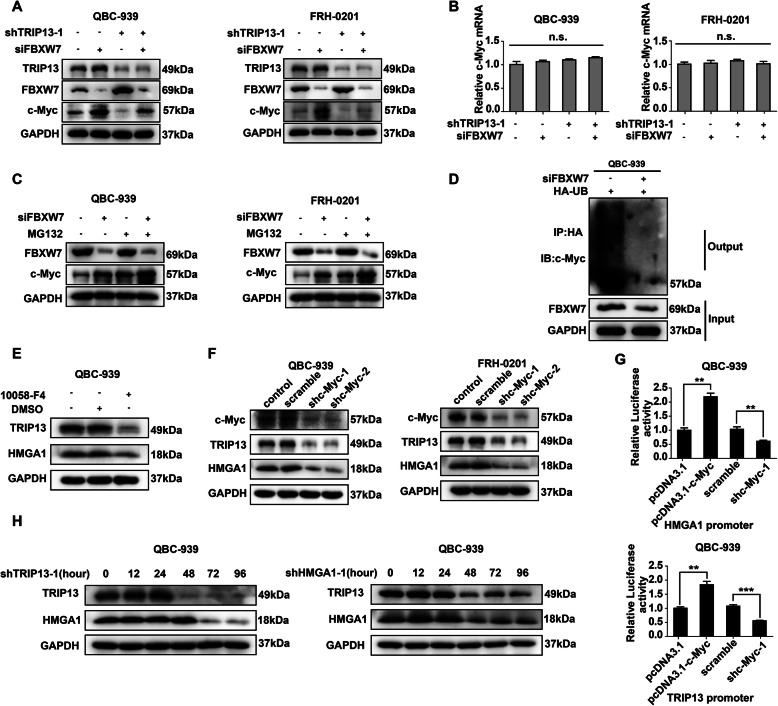Fig. 6.
HMGA1-TRIP13 axis promotes invasion, stemness and EMT in a positive feedback pathway dependent on c-Myc. a,b WB(a) and qRT-PCR(b) showed that FBXW7 and TRIP13 knockdown regulated c-Myc expression but had little effect on c-Myc mRNA. c MG132 inhibited the FBXW7-induced c-Myc degradation. QBC-939(left) and FRH-0201(right) were incubated in 10 μM MG132 for 12 h before lysis. d FBXW7 knockdown decreased the ubiquitination of c-Myc. 24 h after transfection with HA-Ub and siFBXW7, QBC-939 cells were incubated in 10 μM MG132 for 12 h. HA beads were used to precipitate HA-interacting proteins and c-Myc antibody was used to detect the ubiquitinated c-Myc. e,f c-Myc inhibitor 10,058-F4(e) and c-Myc knockdown(f) decreased the expression of HMGA1 and TRIP13 in pCCA cells. 10,058-F4(10 μM) was used to pre-incubate QBC-939 cells for 12 h. g Luciferase assays revealed that c-Myc promoted the transcription of TRIP13 and HMGA1 of QBC-939 cells. The transcriptional activity of HMGA1(up) and TRIP13(bottom) were detected with luciferase assays. ** represents P < 0.01, calculated with T-test. h HMGA1 knockdown rapidly decreased TRIP13 expression, while TRIP13 knockdown attenuated HMGA1 expression 12–24 h later. QBC-939 were transfected with shTRIP13 or shHMGA1 and incubated for 0–96 h. Analyzed data were from three independent experiments, and each subgroup was performed at least in triplicate

